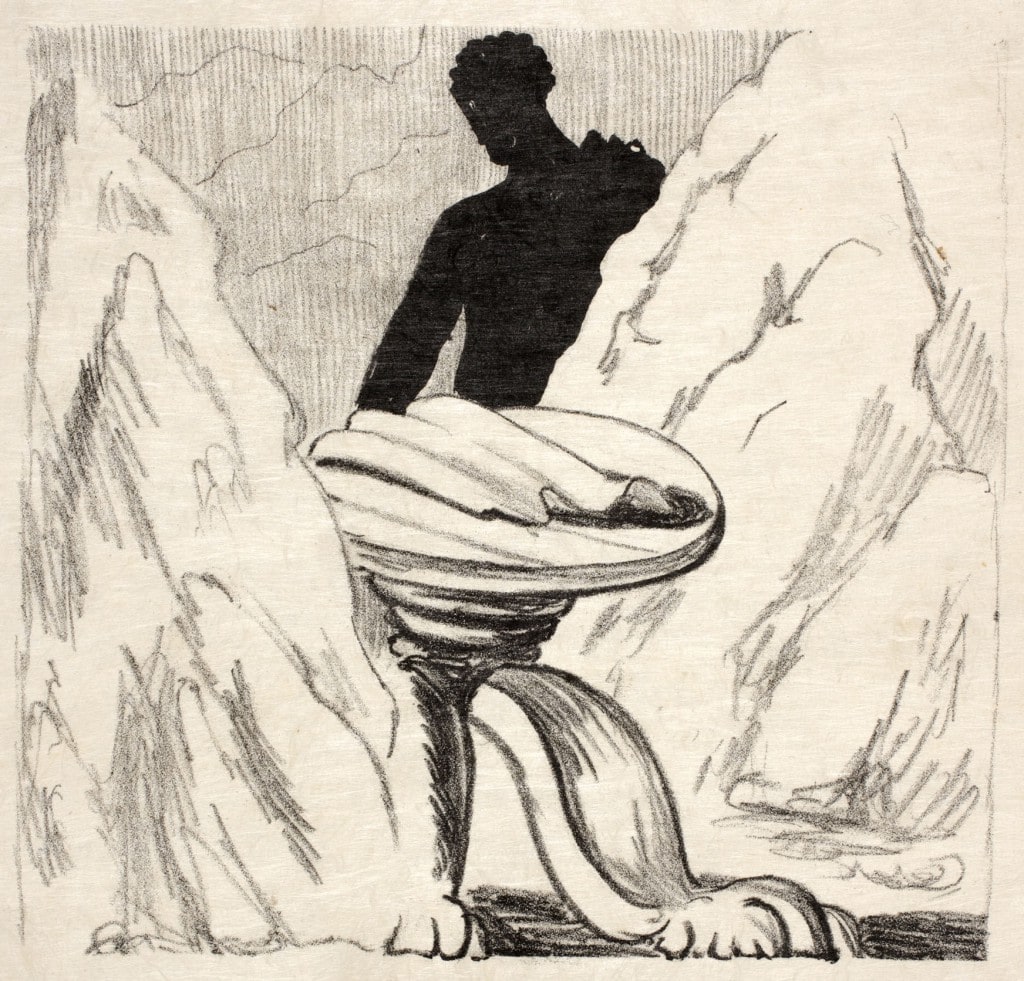13 April 2016

Pera Museum is proud to present an exhibition of Giorgio de Chirico, a pioneer of the metaphysical art movement and one of the most extraordinary artists of the 20th century.
Take a look at one of Giorgio de Chirico’s greatest graphical achievements, Calligrammes!
Calligrammes (1930)
In 1930, Éditions Gallimard published G. Apollinaire’s 1913 poetic work Calligrammes, which is illustrated with sixty-six monochromatic lithographs by de Chirico. Paying homage to his dear friend Apollinaire, Calligrammes constitutes one of de Chirico’s greatest graphical achievements in terms of originality. Exhibited here in its interiority, he chose to illustrate Apollinaire’s poems with the Sun on the Easel theme that he had recently developed in Paris. Often depicting two suns or moons connected to one another via a cable, one appears illuminated whilst the other celestial body is ‘turned off’. The flow of power between the two stops at a certain point. De Chirico places this sun-wire-sun or moon-wire-moon motif in both interior and exterior architectural settings.
Highlighting his various periods with examples from his earliest works to last ones, Giorgio de Chirico: The Enigma of the World exhibition took place at the Pera Museum between 24 February - 08 May 2016.

Nam June Paik was video art’s pioneer (1932 –2006). It is interesting that while Warhol and Nameth were experimenting with psychedelic happenings that combined rock, film and performance, the video art pioneers Nam June Paik, Stephen Beck, Eric Siegel and Steina Vasulka were researching in a similar direction.

Inspired by the exhibition And Now the Good News, which focusing on the relationship between mass media and art, we prepared horoscope readings based on the chapters of the exhibition. Using the popular astrological language inspired by the effects of the movements of celestial bodies on people, these readings with references to the works in the exhibition make fictional future predictions inspired by the horoscope columns that we read in the newspapers with the desire to receive good news about our day.

Istanbul’s Seaside Leisure: Nostalgia from Sea Baths to Beaches exhibition brought together photographs, magazines, comics, objects, and books from various private and institutional collections, and told a nostalgic story while also addressing the change and socialization of the norms of how Istanbulites used their free time. Istanbul’s Seaside Leisure was a documentary testament of the radical transformations in the Republic’s lifestyle.
Tuesday - Saturday 10:00 - 19:00
Friday 10:00 - 22:00
Sunday 12:00 - 18:00
The museum is closed on Mondays.
On Wednesdays, the students can
visit the museum free of admission.
Full ticket: 300 TL
Discounted: 150 TL
Groups: 200 TL (minimum 10 people)